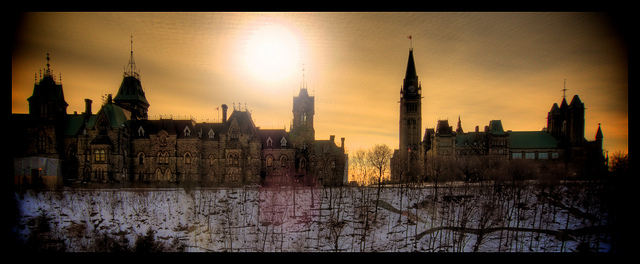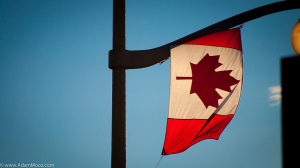“Just watch me!” – false flag politics and terrorism


On October 22nd 2014, an armed individual[1] assaulted the National War Memorial as well as the Parliament Building, two politically and historically symbolic edifices located in the capital of Ottawa. 24 years old Corporal Nathan Cirillo was killed in the incident. The events in Ottawa were particularly shocking. Not only was the heart of Canada democracy attacked, but Corporal Ciricllo was unarmed and was guarding a symbol of the lives lost in battle when he was gunned down. The last time Canadians experienced such horror in their backyard was during the 1970 October Crisis, when the Front de Libération du Québec (FLQ) kidnapped a British diplomat and assassinated then-Labour Minister, Pierre Laporte. The FLQ militants were clearly terrorists, and to deal with the crisis, Prime Minister Pierre Elliott Trudeau used the War Measures Act to suspend civil liberties and apply a form of martial law, in the name of protecting the people. When asked how far he was willing to go, he replied with his now famous “just watch me!” Today, increasingly confronted with this kind of attacks and the threat of the Islamic State (IS) as well as the rise of terrorism and extremism in the world, how far are governments willing to go to protect their people, resources and sovereign state? More important, how far are we, the people, willing to allow our elected politicians to enact measures meant to ensure our security?
The expression frequently used to refer to individuals who unilaterally perpetrate solo attacks like the ones we saw in Canada this past month is “lone wolves.”[2] There are many examples. Moncton, New Brunswick, earlier this year. Oslo, Norway, four years ago. With that said, it is not just because someone is a lone wolf that he is necessarily a terrorist. A terrorist is commonly described as someone who uses violence to pursue political aims. In relation to this, a narrow definition of “lone wolf terrorist”, according to Jeffrey Simon, is “an individual acting alone, using violence or the threat of violence to further a political, social or religious goal.”[3] Simon, however, claims that the former definition is not comprehensive enough. He suggests that it is the effects of the perpetrator’s actions that can allow us to brand him a terrorist, not just whether or not he had a political, social and/or religious goal.[4] Due to the recent emergence of the Islamic State (IS) and the situation in the Middle East, there has been a lot of fear that the caliphate would inspire some attacks abroad. That concern was exacerbated by Canada’s decision to help the anti-IS coalition led by the United States by sending military advisors and conducting airstrikes. This led to a call from IS spokesman Abu Muhammad al-Adnani, who urged people to kill Western “disbelievers.”[5] It is in this global context of fear that Ottawa was hit.
The perpetrator of the attack in Ottawa has been branded a terrorist by just about every single media, as well as politicians. In his address following the day’s events, Prime Minister Harper used the word terrorist as much as 8 times.[6] After the shooting, Tom Mulcair, leader of the New Democratic Party (NDP) and of Her Majesty’s Loyal Opposition, on the contrary claimed that the perpetrator was not a terrorist, but simply committed a criminal act.[7] Liberal leader Justin Trudeau quickly condemned him, agreeing with law enforcement forces that the individual was indeed a terrorist. Nevertheless, it is not clear-cut. The word “terrorist” is used left and right these days, sometimes wrongfully. However, it does not apply to every single attack. There are two ways in which we can qualify the Ottawa shooter: either he is a full fledged “lone wolf terrorist” or he is simply a petty “lone wolf criminal” who chose the right targets to make the media and the population talk about him. The first case implies that the individual was in fact driven by political motives. That he chose Parliament and the War Memorial as targets not to have people talk about him, but because he genuinely despised Canada’s policies and its political turn, and wanted to hurt it at the heart. As for the petty “lone wolf criminal” scenario, it would brand him as insignificant as those youngsters who perpetrate shootings in schools, such as in Columbine in 1997 and École Polytechnique in 1989. Of course, the consequences and the later interpretations of his actions are not. However, he himself, as an individual, apparently did not represent a larger organization or ideology. In fact, this seems to be supported by one simple thing: no terrorist organization, whether it be the Islamic State, the Al Nusra Front or even al-Qaeda, has claimed any responsibility for the attack or given an indication that it has facilitated the attack. Knowing this, what leads people to call him a terrorist?
No one can deny that religion is the principal factor. The man was a Muslim. As mentioned above, Muslims are often arbitrarily branded terrorists. Profiling is nothing new. We must realize that in fact, a quasi-totality of Muslims (who represent 23% of the world’s population and are around 1.6 billion strong)[8] has no terrorist aims. Inversely, we must also see that, out of the rest of the (non-Muslim) inhabitants of the world, there are some that could be qualified as terrorists. The bottom line is that “terrorist” has become a sensationalist term: the media loves it because it makes good headlines and politicians love it because it allows them to further advance their goals.
Instilling enough fear in the people allows easier legislation thanks to the “false flag” effect. This is not to claim that politicians are insensitive to the tragedies that such attacks bring, but there is always a way in which they may use the situation to their advantage. The term “false flag” usually refers to an attack that is perpetrated by one entity and blamed on another by the victim to raise patriotic sentiment and gain political support within the population. A prime example remains the 9/11 attacks. While most of the attackers were Saudis, President Bush used the events as a pretext to start his campaign in Afghanistan, and, two years later, invade Iraq. According to the Gallup poll conducted just before the 9/11 attacks, President George W. Bush’s approval rating was 51%.[9] Then, in the first poll after the attacks, his approval had skyrocketed to 86%, reaching 90% just ten days after the towers fell.[10] Thus, the attacks gave a positive boost to his administration in terms of governmental policy. In Canada, there has been talk of reinforcing powers for surveillance and intelligence agencies. It would not be surprising, then, to see the Harper government benefit from more support because of the attack on Ottawa.
The bottom line is that buzzwords such as “terrorist,” “criminal,” “shooter,” “jihadist” can mess with the mind of the people and make them support policies they might have opposed before the tragedy. An attack such as this one can potentially allow elected officials to do things that might be undemocratic or unconstitutional, in the name of protecting their populations. President James Madison once said: “If tyranny and oppression come to this land, it will be in the guise of fighting a foreign enemy.”[11] With many Western liberal democracies coming together to stop the IS threat and security/intelligence agencies as well as police forces on the verge of being strengthened in Canada, Madison’s claims appear more relevant than ever. One diverging opinion is that of the US founding father Ben Franklin, who said “they who can give up essential liberty to obtain a little temporary safety deserve neither liberty nor safety.”[12] Whether or not people want to give up liberties in order to ensure their safety should not be left in the hands of governments. It is up to them. In either case, it is important to protect the very democracy that was attacked by holding elected officials accountable. The people owe it to themselves to stand strong and not be pushed around, whether by elected officials or by foreign powers and threats.
[1] The name of the perpetrator of this terrible attack will not be mentioned anywhere. It is my opinion that it has been circulated way too often by the mainstream media, when it should not have been.
[2] Saunders, Doug. “When Troubled Young Men Turn to Terror, Is It Ideology or Pathology?” The Globe and Mail. Globe and Mail, 24 Oct. 2014. Web. 13 Nov. 2014
[3] Lin, Judy. “Q&A: Terrorism Expert Jeffrey Simon on Christopher Dorner and Other ‘lone Wolves'” UCLA Today Newsroom. UCLA Today, 14 Feb. 2014. Web. 13 Nov. 2014.
[4] Ibid.
[5] Bayoumy, Yara. “Isis Urges More Attacks on Western ‘disbelievers’.” The Independent. Independent Digital News and Media, 22 Sept. 2014. Web. 13 Nov. 2014.
[6] News, CBC. “Ottawa Shooting: Harper, Mulcair, Trudeau Speak about Attack.”CBCnews. CBC/Radio Canada, 23 Oct. 2014. Web. 13 Nov. 2014.
[7] Gollom, Mark. “Ottawa Attack: Was Michael Zehaf-Bibeau’s Attack a Terrorist Act.”CBCnews. CBC/Radio Canada, 31 Oct. 2014. Web. 13 Nov. 2014.
[8] Desilver, Drew. “World’s Muslim Population More Widespread than You Might Think.” Pew Research Center. Pew Reasearch Center, 17 June 2013. Web. 11 Nov. 2014.
[9] Poll from 07-10/09/2001: “Presidential Approval Ratings – George W. Bush.” Gallup.com. Gallup, n.d. Web. 11 Nov. 2014.
[10] Poll results from 14-15/09/2001 and 21-22/09/2001: Ibidem.
[11] “James Madison Quote.” BrainyQuote. Xplore, n.d. Web. 13 Nov. 2014.
[12] Goodreads, Benjamin Franklin’s author profile
